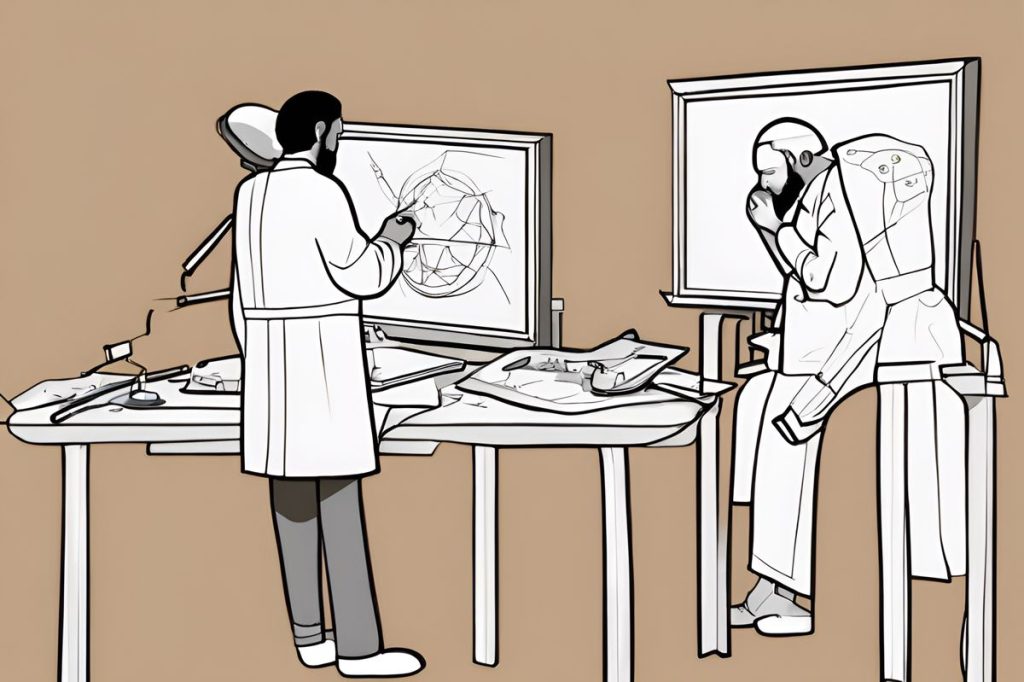The Cyprus Institute and the Louvre Museum are revolutionizing how we study cultural heritage with their innovative X-ray fluorescence analysis scanner. This groundbreaking technology allows for non-invasive examination of artifacts, revealing hidden details without damage and providing new insights into the conservation and history of cultural treasures.
What innovative research methods are The Cyprus Institute and the Louvre using to study cultural heritage?
The Cyprus Institute and the Louvre have developed a groundbreaking X-ray fluorescence analysis scanner. This technology allows for non-invasive examination of artifacts, revealing hidden details without damage, and provides new insights into the conservation and history of cultural treasures.
A Collaborative Effort in Cultural Heritage
The study of cultural heritage often evokes images of dusty artifacts and ancient texts, but a recent collaboration between The Cyprus Institute and the Louvre Museum is bringing a wave of innovation to the field. By combining their expertise, these institutions have embarked on a fascinating journey to delve deeper into the treasures of the past.
Their joint efforts have culminated in the development of cutting-edge methods and technologies. These tools are designed to unravel the complexities of art and archaeological findings through an interdisciplinary approach, combining the analytical prowess of science with the nuanced understanding of history. One such innovation is an original laboratory infrastructure that boasts an X-ray fluorescence analysis scanner. This is not your ordinary scanner; it’s a gateway to the concealed stories of historical artifacts.
Uncovering Hidden Details
Imagine being able to peer beneath the surface of a centuries-old painting or to understand the composition of a piece of ancient jewelry without altering it in any way. That’s the power the new scanner technology, developed by The Cyprus Institute, brings to the table. Supported by the scientific guidance of Dr. Andreas Pittas, the technology merges the capabilities of X-ray analysis with multispectral photography to reveal previously hidden details.
This systematic application has the potential to uncover secrets of the past locked within the artifacts, providing fresh data that can inform us about the conservation state of these treasures and offer us new insights into historical narratives. The infrastructure, purposely built in the laboratories of the Cyprus Institute, stands not only as a testament to the institute’s commitment to cultural preservation but also as a beacon for regional studies encompassing the Eastern Mediterranean and the Middle East.
A New Horizon for Cultural Studies
The announcement from The Cyprus Institute illuminates the promising future of cultural heritage studies. By stating that the collaboration with the Louvre “opens new horizons in the study and analysis of treasures of our cultural heritage,” the project underlines the importance of integrating technological advancements into historical research.
The dedication to preserving and understanding the cultural artifacts of Cyprus—and by extension, those of the neighboring regions—reflects a broader commitment to safeguarding our shared human history. The new methods not only enhance the current knowledge but also ensure that these cultural gems can be appreciated by future generations.
The Ripple Effect of Research
The ripple effect of such an innovative project cannot be overstated. With the enhanced understanding of cultural artifacts, historians, conservators, and the public can gain a more nuanced appreciation of the past. It also opens doors for educational opportunities, allowing for a more interactive and engaging experience with history.
The commitment of both The Cyprus Institute and the Louvre Museum to this pioneering research marks a milestone in cultural studies. By embracing modern technology, they set a precedent for how we approach and value the legacies of ancient civilizations. Through their work, the past is not only preserved but also brought to life in new and exciting ways for all to explore.
How does the X-ray fluorescence analysis scanner developed by The Cyprus Institute and the Louvre work?
The X-ray fluorescence analysis scanner developed by The Cyprus Institute and the Louvre allows for non-invasive examination of artifacts by using X-ray analysis and multispectral photography to reveal hidden details without causing damage to the objects. This technology provides new insights into the conservation and history of cultural treasures.
What are some of the benefits of using the X-ray fluorescence analysis scanner in cultural heritage research?
Some benefits of using the X-ray fluorescence analysis scanner include the ability to uncover hidden details within artifacts, gain insights into the conservation state of cultural treasures, and provide new information that can enhance historical narratives. Additionally, this technology allows for a deeper understanding of the composition of artifacts without altering them in any way.
How does the collaboration between The Cyprus Institute and the Louvre contribute to cultural heritage studies?
The collaboration between The Cyprus Institute and the Louvre is revolutionizing cultural heritage studies by integrating cutting-edge technology with interdisciplinary approaches to analyze artifacts. This partnership has led to the development of innovative research methods and tools that provide fresh data on historical artifacts, opening new horizons in the study and analysis of cultural treasures.
What impact does the innovative research conducted by The Cyprus Institute and the Louvre have on cultural preservation and education?
The innovative research conducted by The Cyprus Institute and the Louvre has a significant impact on cultural preservation and education. By uncovering hidden details within artifacts and providing new insights into historical narratives, this research enhances our understanding and appreciation of the past. It also creates educational opportunities for historians, conservators, and the public to engage with history in a more interactive and meaningful way.

